Like a dance we don't even know we're doing, yet somehow all know the steps
Choreography is the sequence of steps and movements in dance.
Choreography gives instructors a language to analyze, evaluate and teach dancers.
Tango has its Cruzada, Colgada, Calecita, and Giro.
Same applies to some sports:
– Fencing has its Lunge, Riposte, Fleche, and Balestra.
– Boxing has its Jab, Uppercut, Clinch, and Right Hook.
– Hockey has its Forechecking, Backchecking, Dump and Chase, Wraparound, Power Play, and Stickhandling.
The choreography of customer support conversations
Customer support conversations are no different. Each customer and agent comes to every conversation with a goal in mind. They take turns. Every turn is a move that plays a role in pushing the conversation toward that goal. Some moves serve as a greeting, others as making an offer, asking to confirm details, etc. If the customer makes a particular move, it is up to the agent to respond appropriately to keep the conversation on the path to successful conclusion.
Below are two customer support conversations – one is a phone call with support of a B2C ecommerce company, the other one is a live chat with support of a B2B SaaS company that provides invoicing software for merchants. These are different industries, yet the same sequence of “conversational moves” describes both of them. This sequence fits not just these two conversations, but tens of thousands of conversations that happened in call centers in various companies.
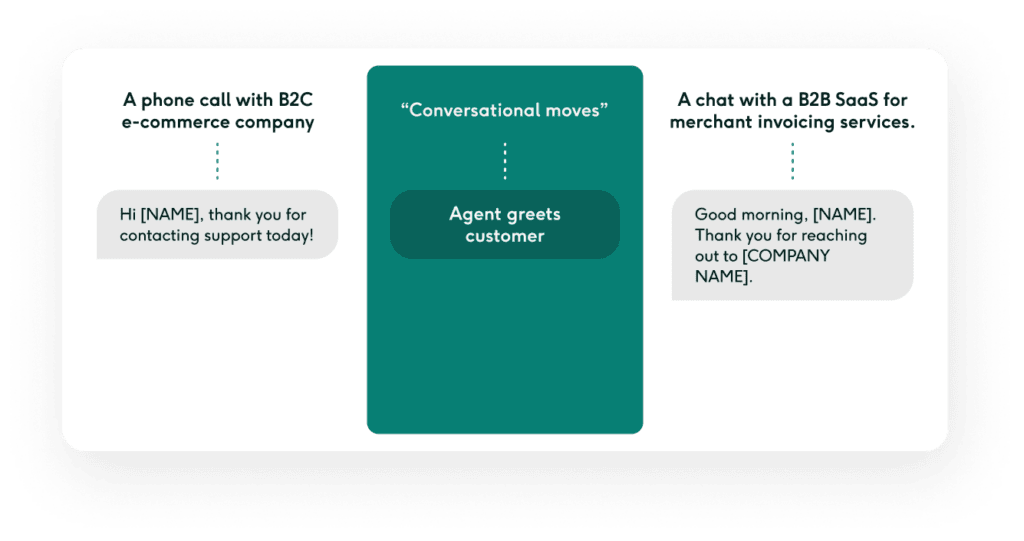
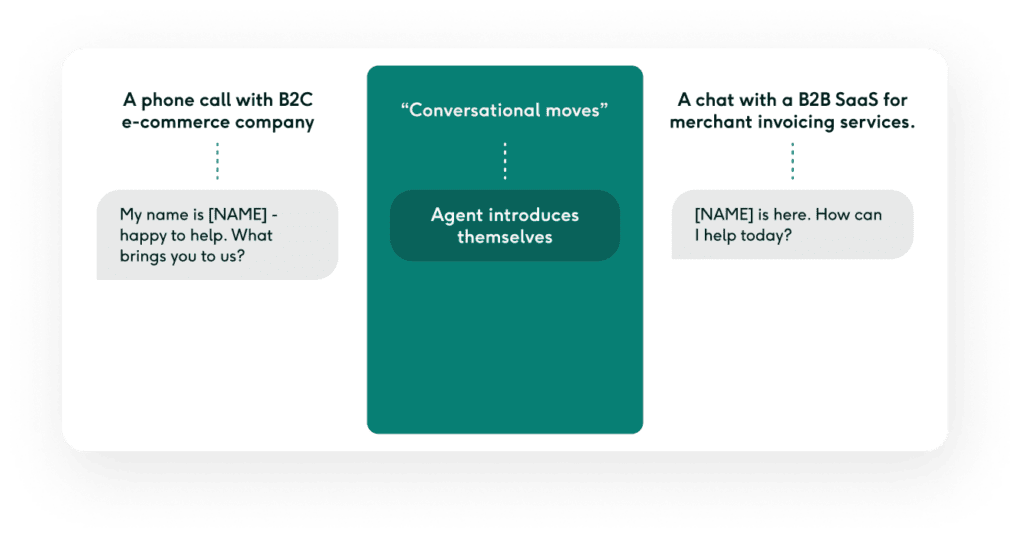
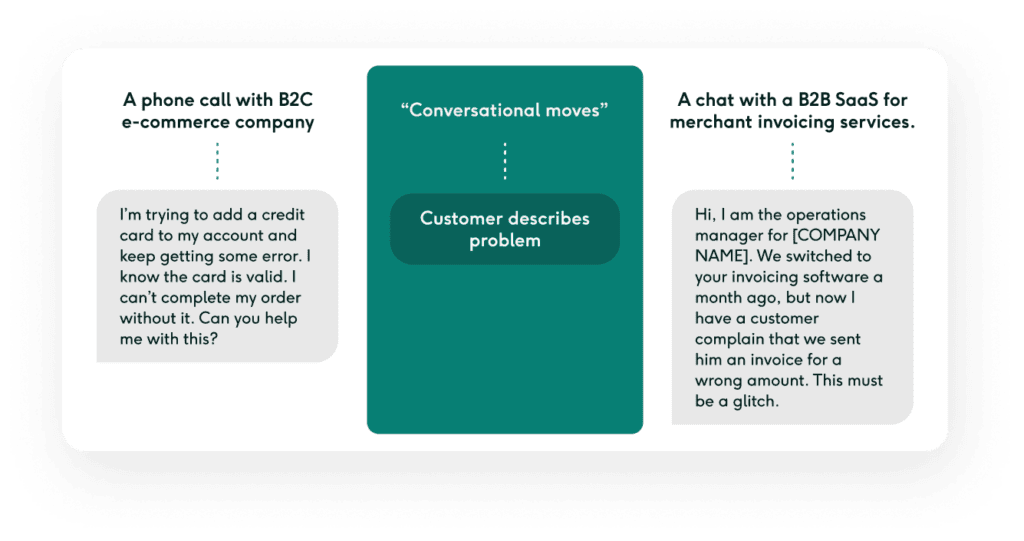
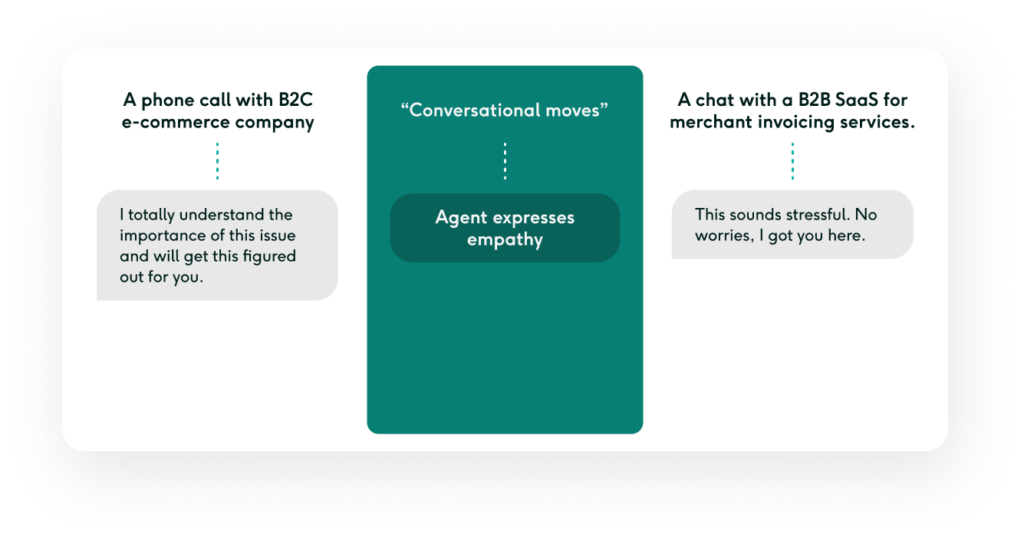
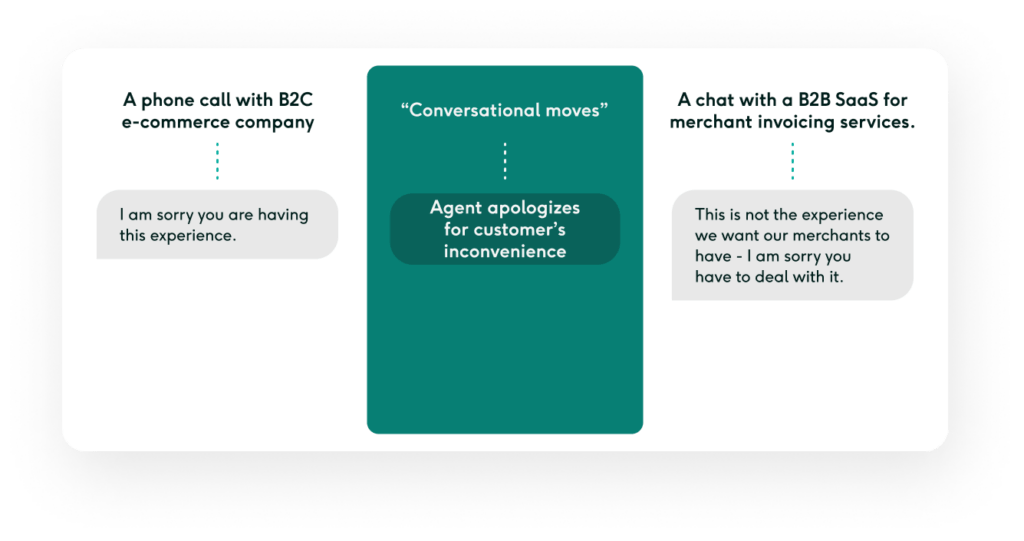

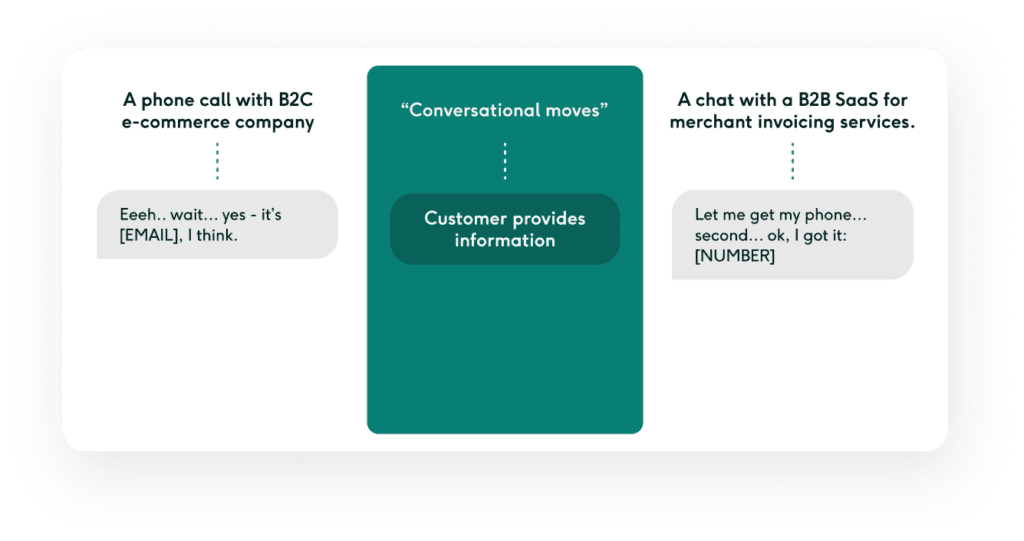
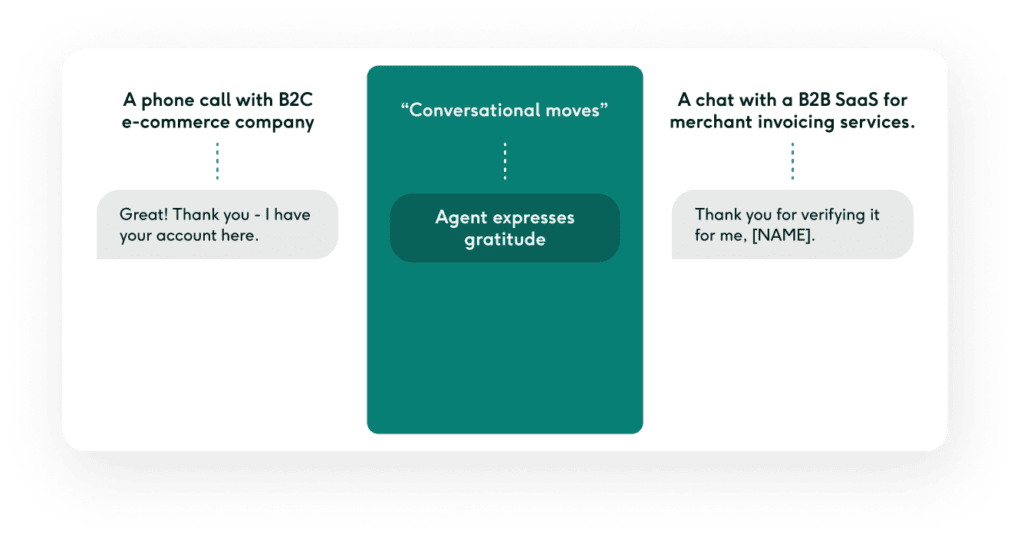
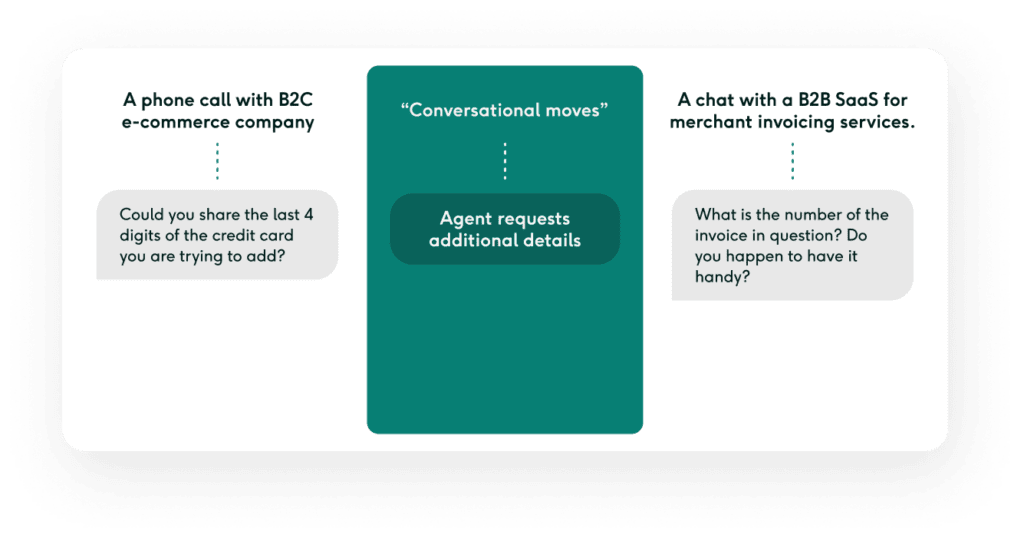
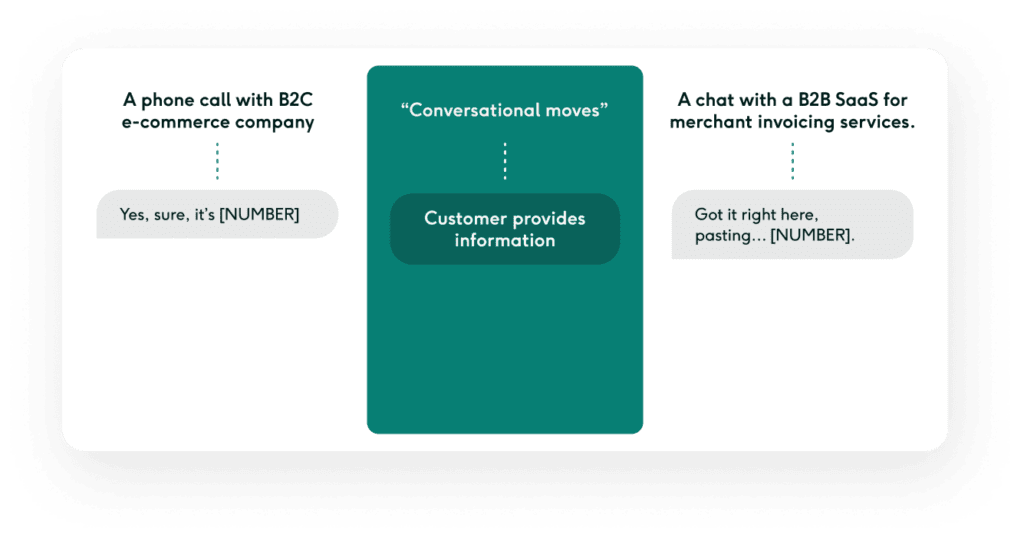
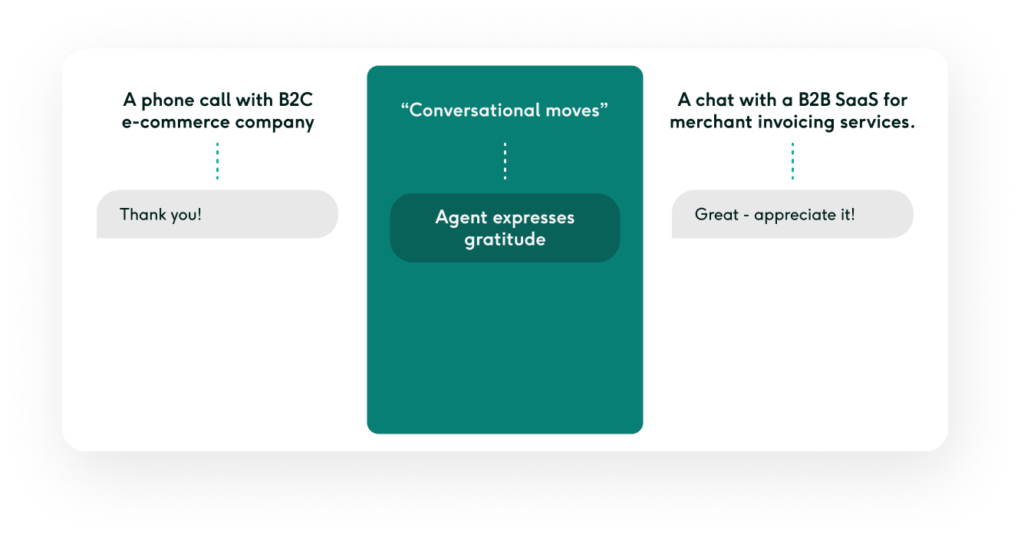


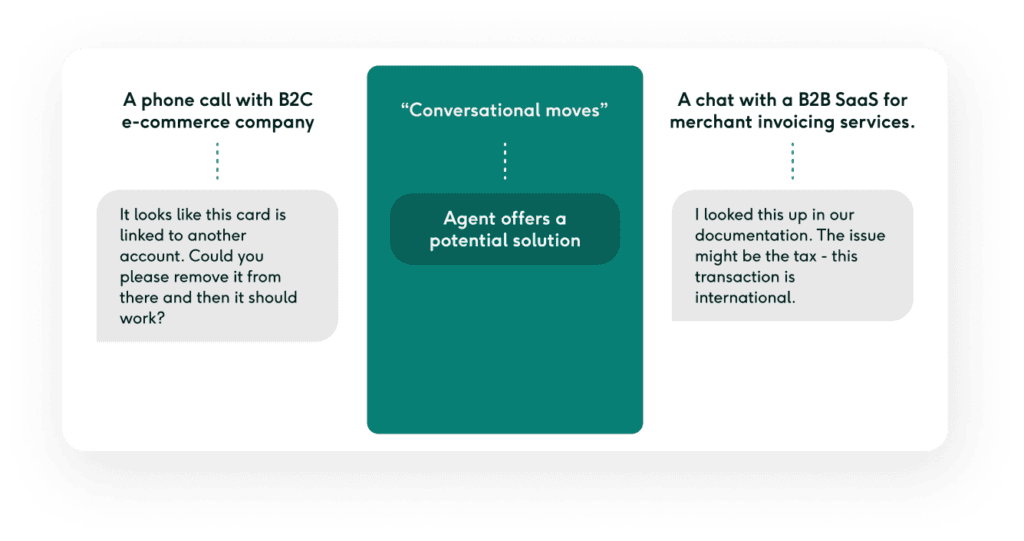
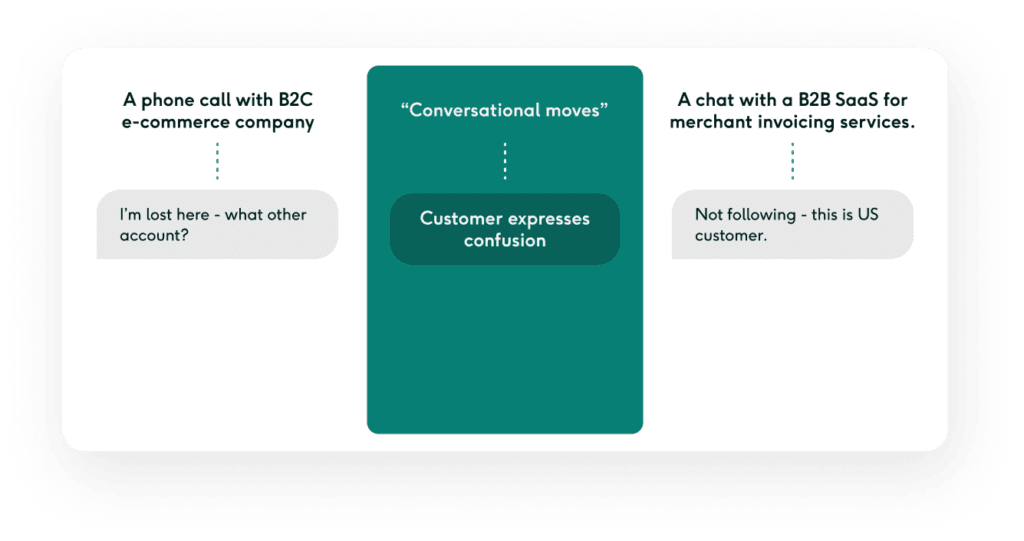
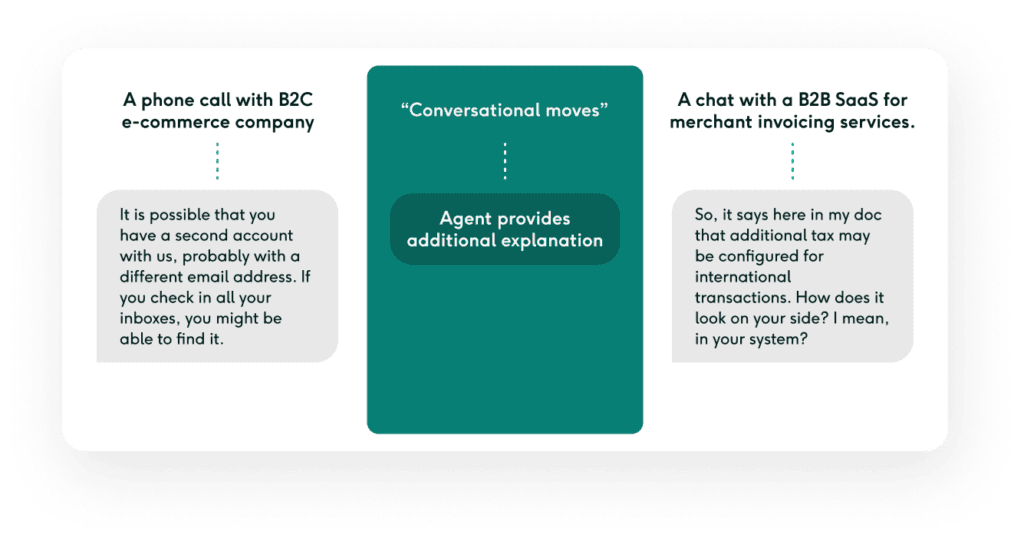
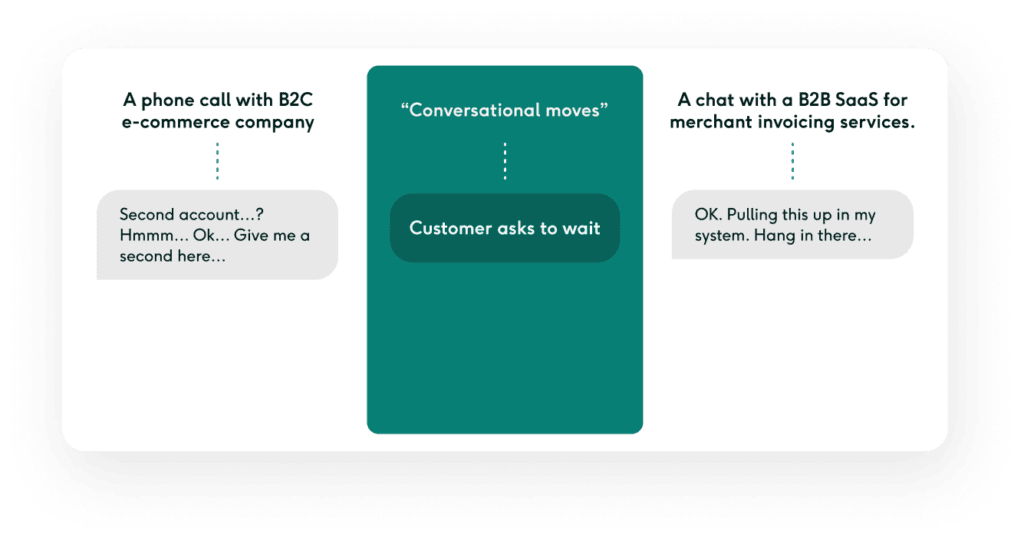
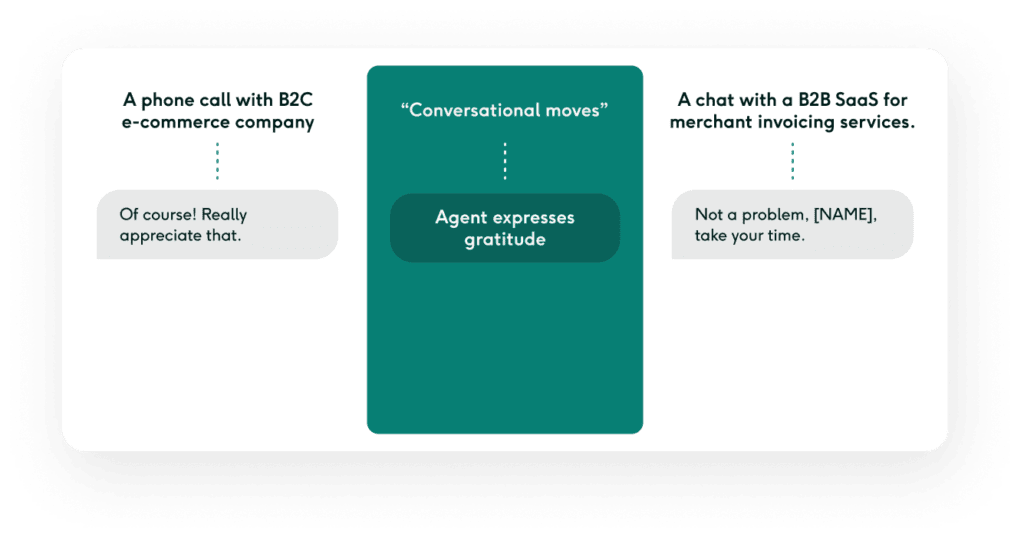
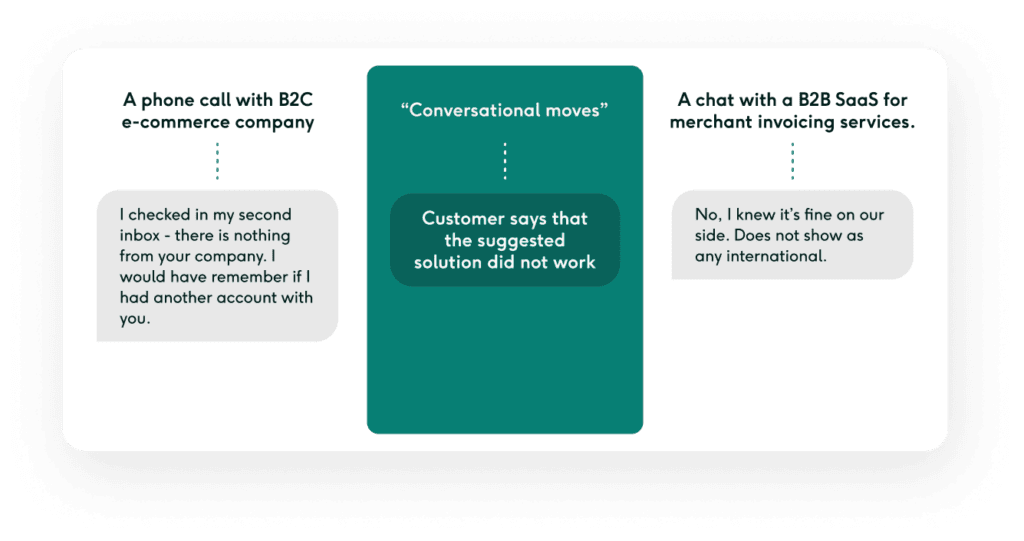
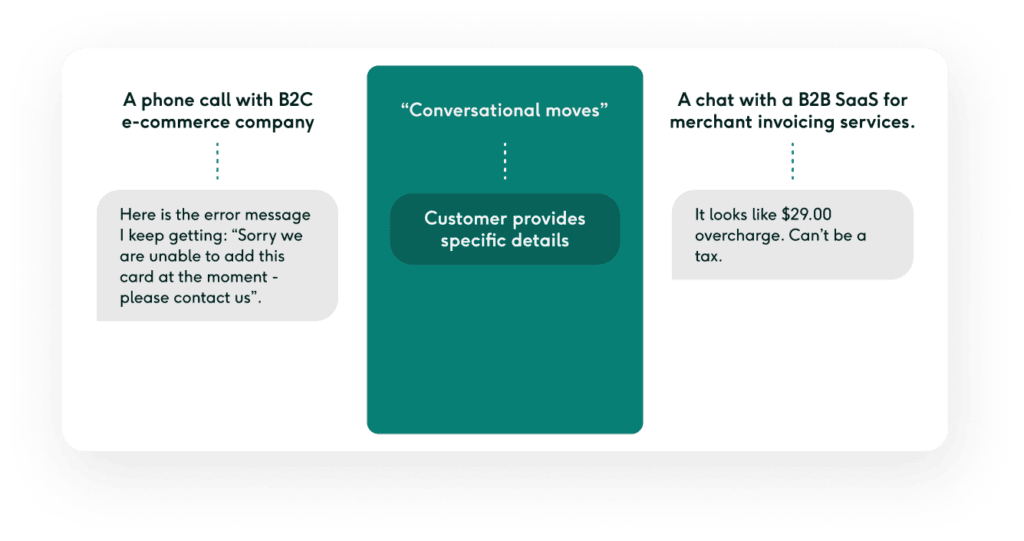
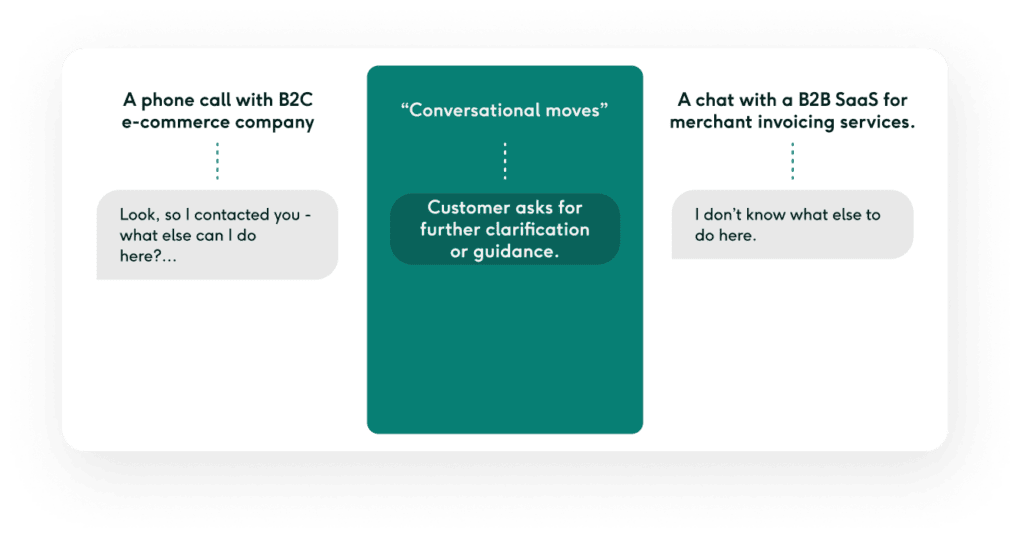
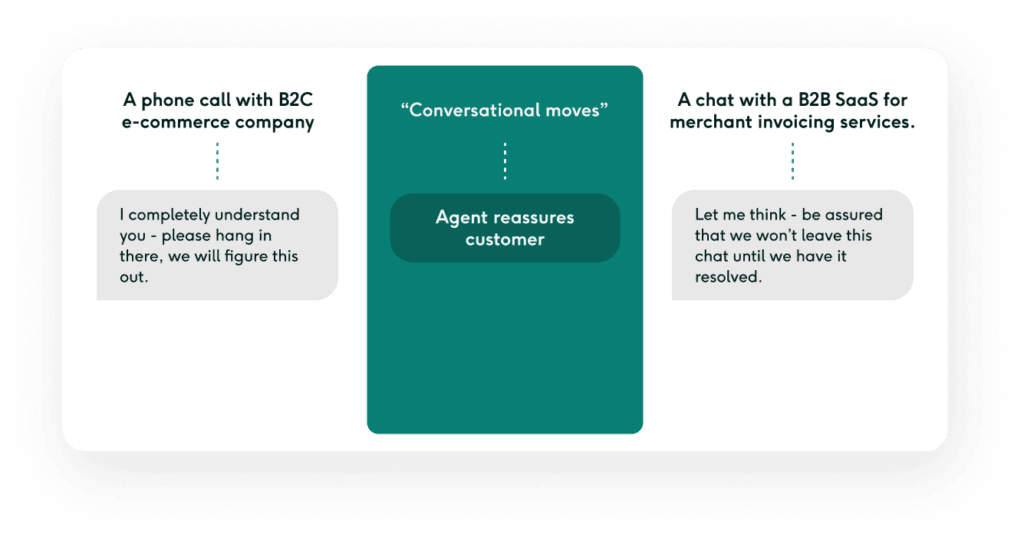
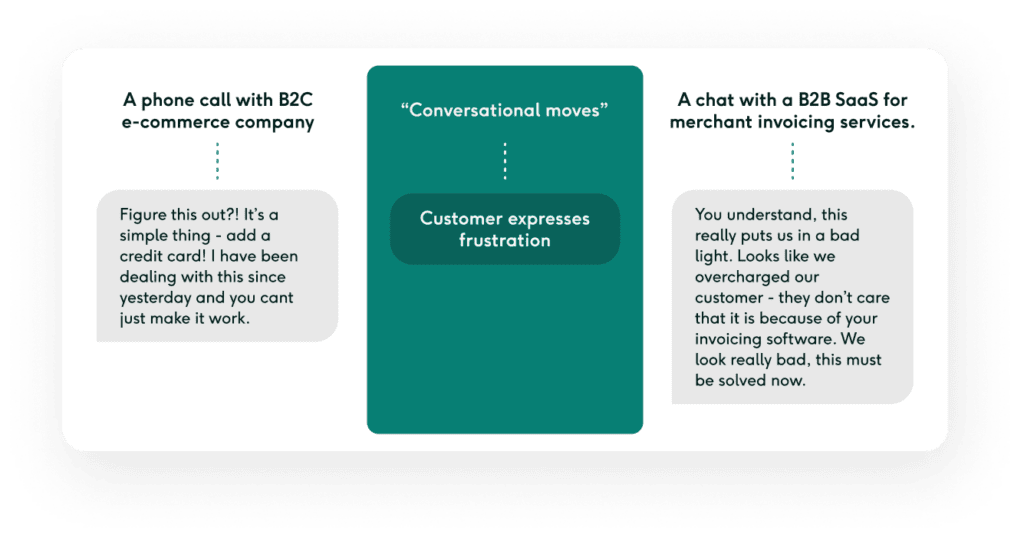
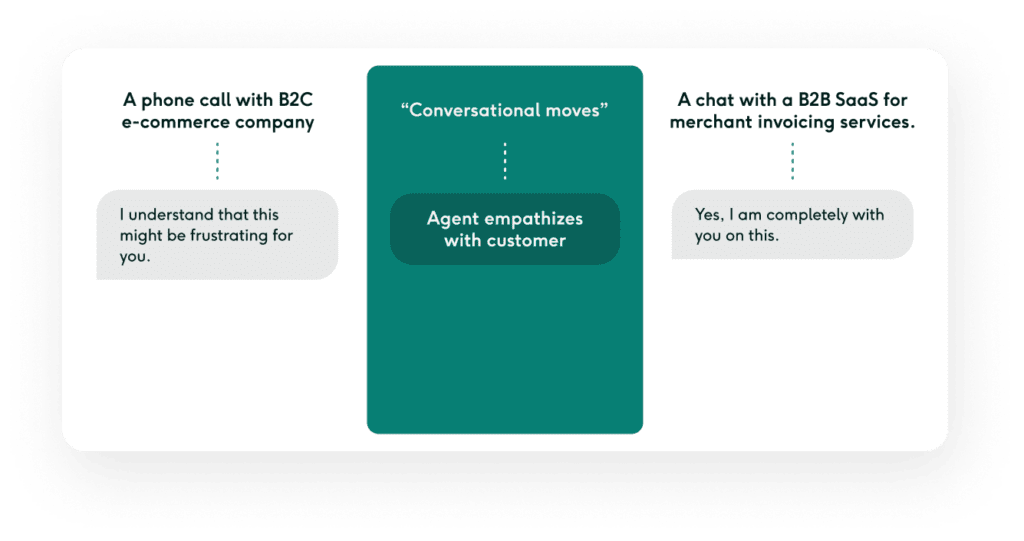
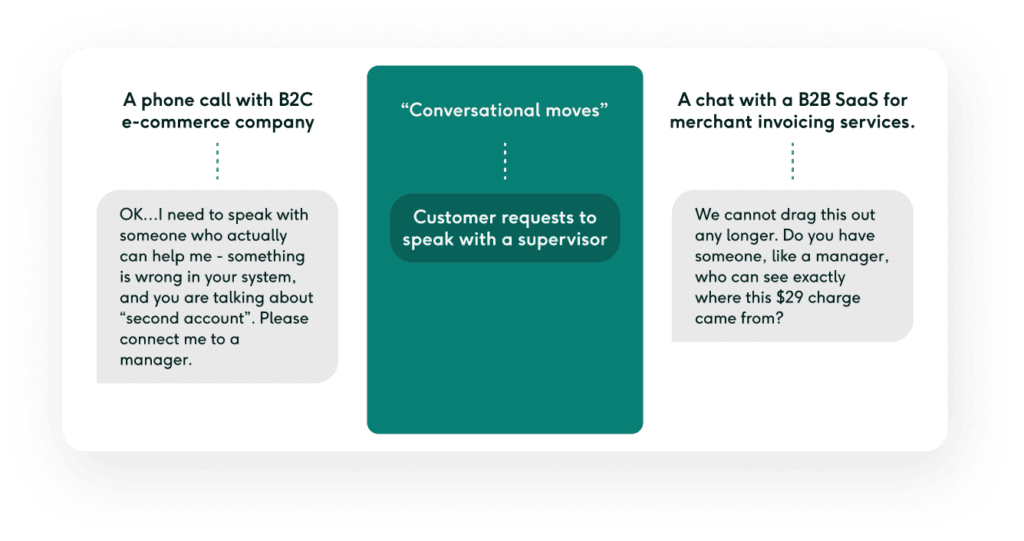
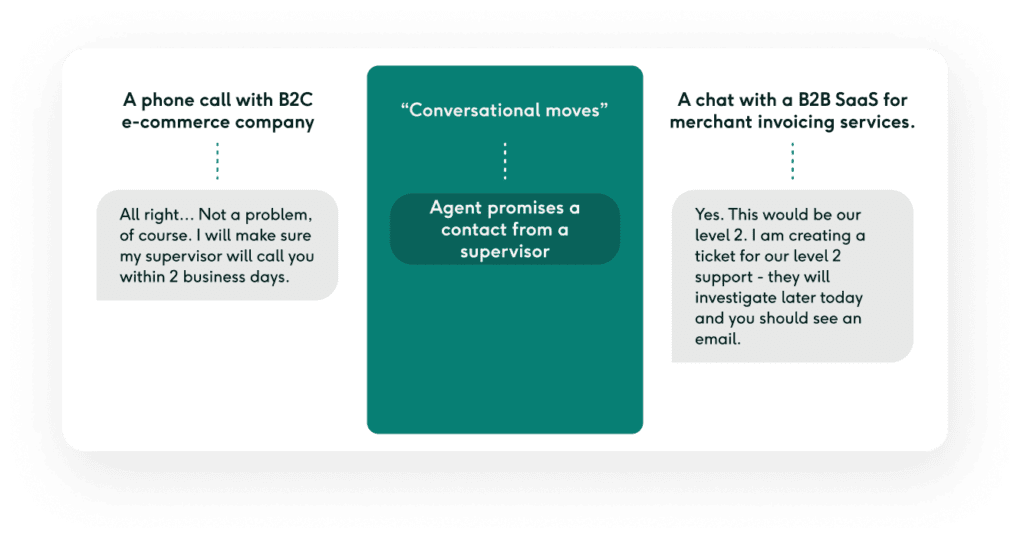
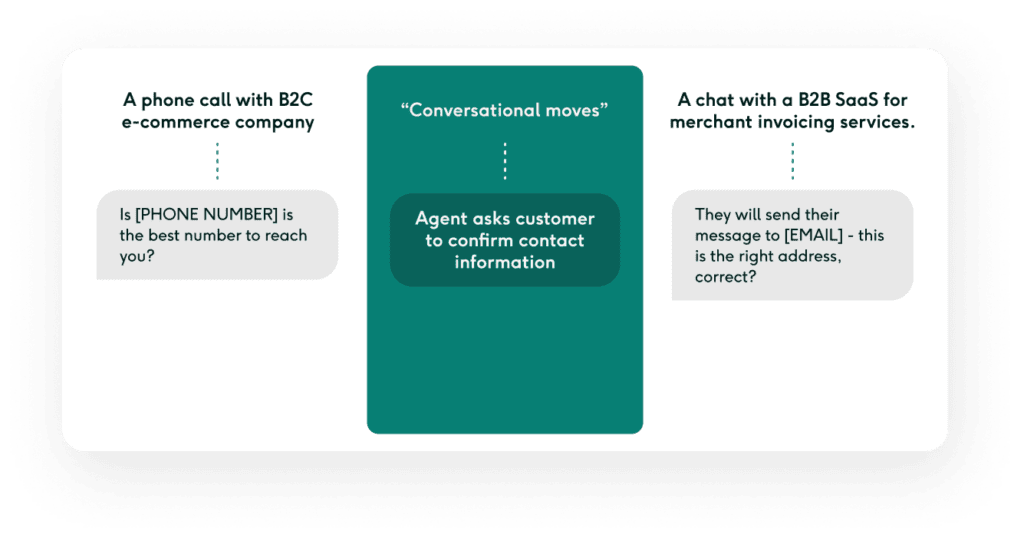
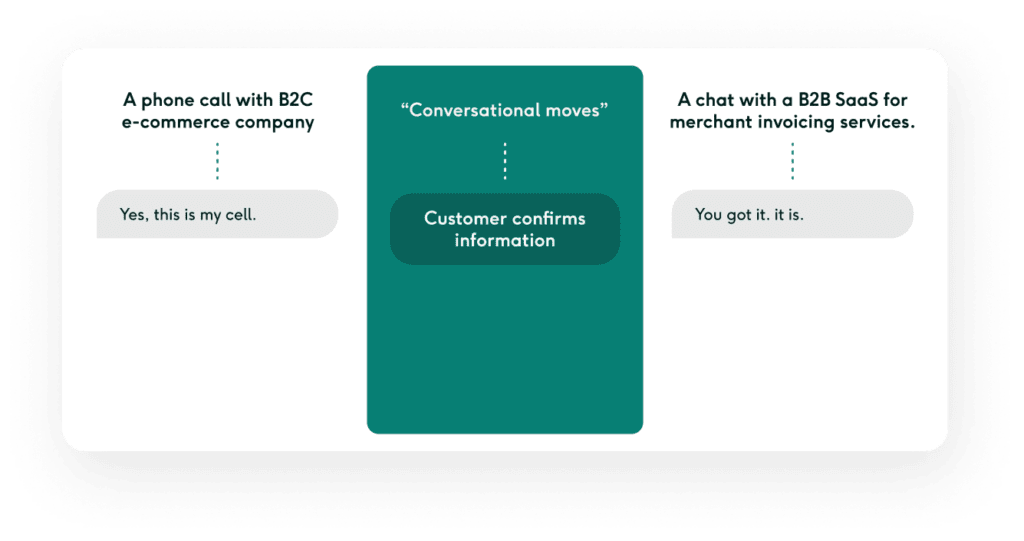
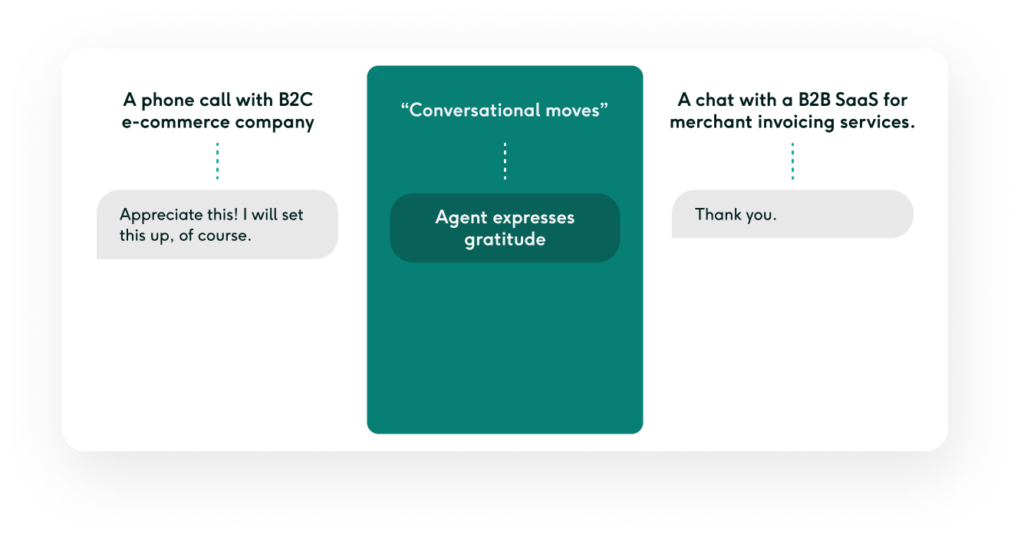

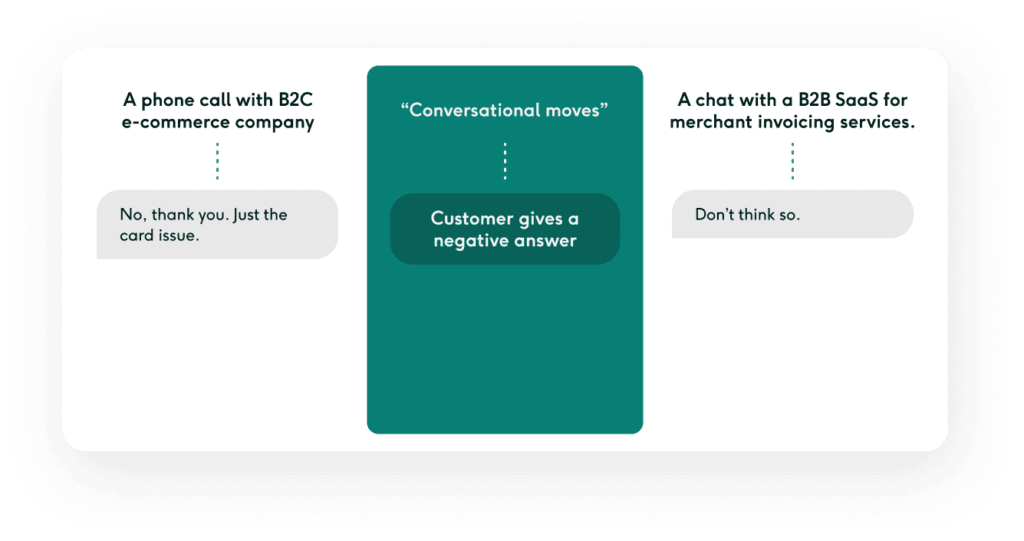
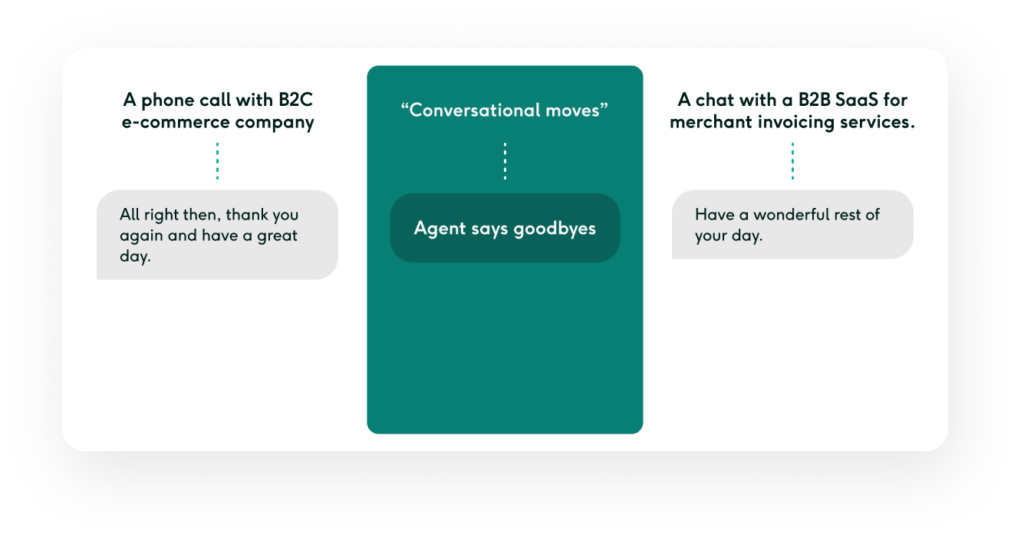

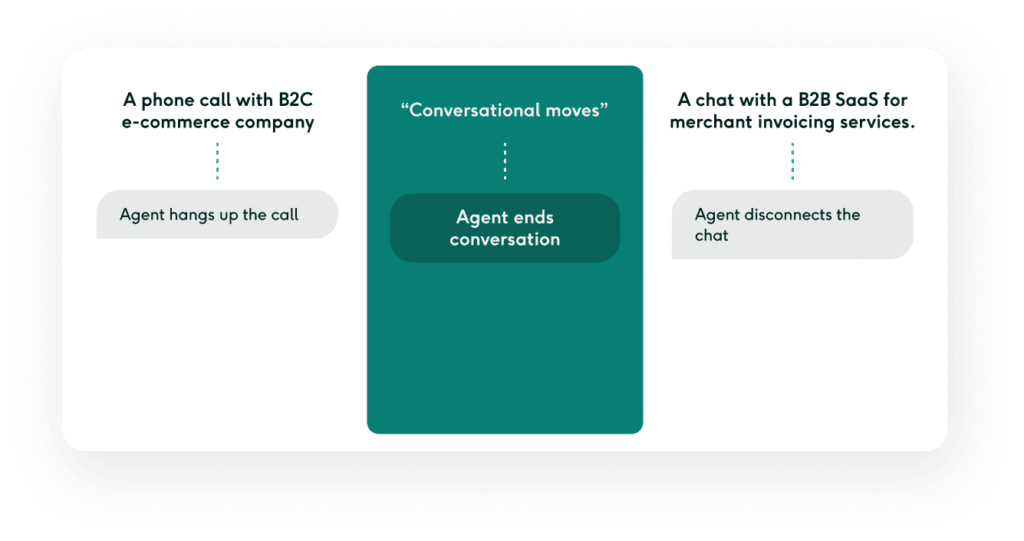
These conversations did not take the “golden path” leading to successful resolutions and satisfied customers. In the later steps of the conversation, the customer expressed frustration after the solution the agent suggested did not work for them. The agent’s response was an expression of empathy, but this did not stop the conversation from going off the rails.
A Customer Experience Manager or a Quality Assurance analyst seeking to optimize their processes can find many more conversations where a similar sequence is present, examine the various reactions of agents to this sequence, and identify one that is more likely to rescue the conversation. Customer support’s repeatable nature provides a laboratory full of natural experiments. But this experimentation is actually part of an established discipline that has long been trying to understand the complexities of interpersonal communication called conversational analysis.
Conversation analysis: Finding opportunities in data
Conversation Analysis is a field of study at the intersection of psychology, social sciences, and linguistics. Conversation Analysis scientists have been doing analysis of real conversations in social and business settings for about 50 years.
This study by Elizabeth Stokoe and Rein Sikveland is a good example of what Conversation Analysis can do in business.
The researchers studied several hundred recordings of calls that mediation services in the UK made to people who had disputes with their neighbors in order to offer them mediation instead of going to the courts. These conversations had a clear goal – convert callers to clients.
The main objection to the offer was the caller saying that the person they are having dispute with is not the kind of person who would accept mediation. After reviewing the calls where this objection was raised, the researchers found that some mediators used a successful strategy: “Is that something you would be willing to do?” instead of the more common “Does this sound like something that can be helpful?”. The “willing” part emphasized the caller’s moral identity as a person who is open to mediation, in contrast with the neighbor who is unreasonable and close-minded. The mediation services added the new strategy to their training and their acceptance of mediation offers increased.
Language AI brings Conversation Analysis to every CX organization
The previous example of conversational analysis was done completely manually – from transcribing the calls to reading and marking them up, to analyzing and looking for patterns.
Hundreds of similar opportunities for improvement are hiding in conversational data in your support organization. Latest developments in Language AI make it easier to find them.
Identifying Contact Drivers, tagging conversations with Conversation Markers (these are the moves), tracking customer sentiment throughout the conversation, predicting CSAT – all these AI features make finding opportunities and taking action, such as updating content and policies, and coaching agents accessible to any CX organization.
Photo credit: ArtTower
